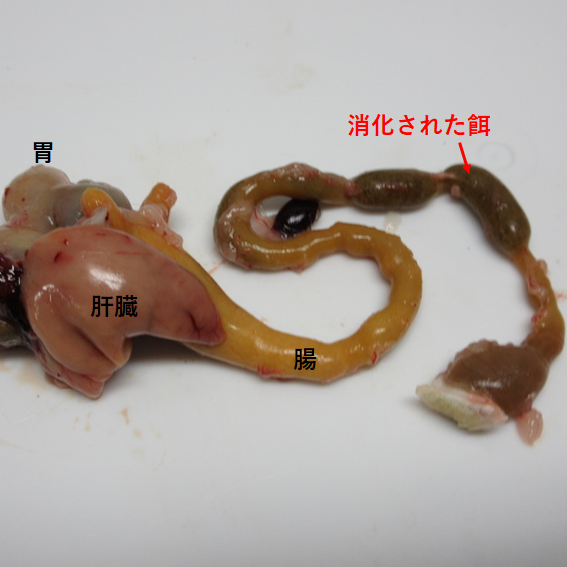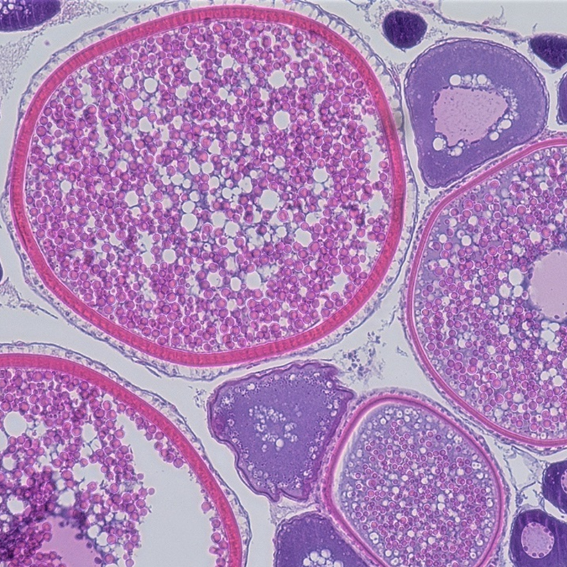Physiological Function Division
The main ingredient of aquaculture feed is fishmeal produced from natural resources. Many of the target species for aquaculture depend on seedlings (i.e., fry and juvenile shellfish) that are caught from natural resources. Sustainable aquaculture requires feed and seedlings that do not depend on natural resources. Therefore, the Physiological Function Division develops aquaculture feed with reduced fishmeal content and breeding technologies to artificially produce seedlings. In addition, as feed costs are a large proportion of production costs in the aquaculture of fish such as yellowtail and red sea bream, the division is researching the use of cheaper ingredients to replace soaring fishmeal prices to stabilize the finances of aquaculture companies.
The Physiological Function Division consists of the Aquafeed Group and Reproduction Group.
Aquafeed Group
Given that current fishmeal substitutes have inferior nutritional value compared to fishmeal, this group is developing feeds that are readily digestible and grow well even with reduced fishmeal content based on the digestive physiology of fish. In addition, they are developing new feed ingredients from single-cell organisms and insects, which have not been used before.
Reproduction Group
This group is investigating the regulatory mechanisms of reproduction and developing technology to obtain high-quality fertilized eggs in captivity by adjusting the rearing environment and administering hormones that promote maturation and spawning. They are also developing technologies for preventing growth loss due to maturation and improving growth in the early stages by using genome-editing technologies.

A digestive tube of the red sea bream after feed consumption
Some feeds reached the intestinal tract after being digested in the stomach.



